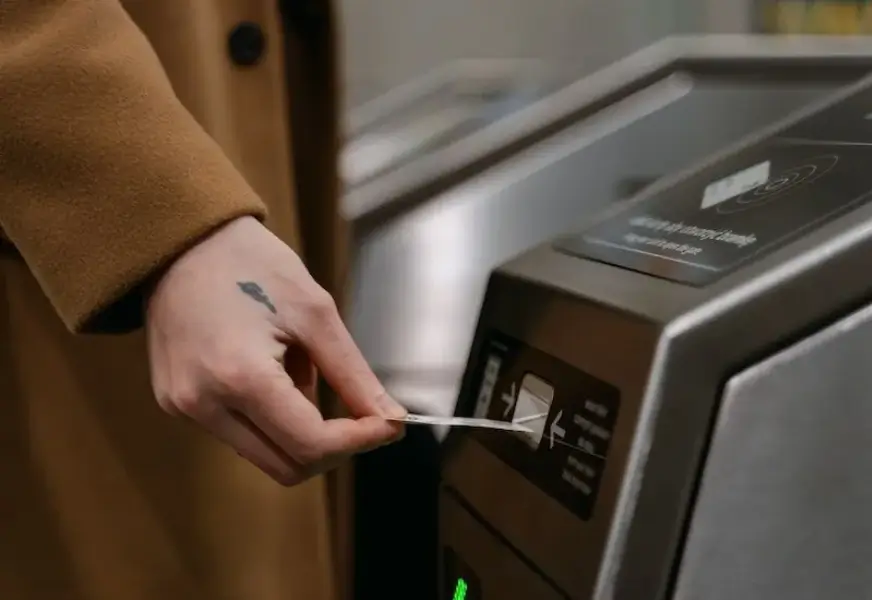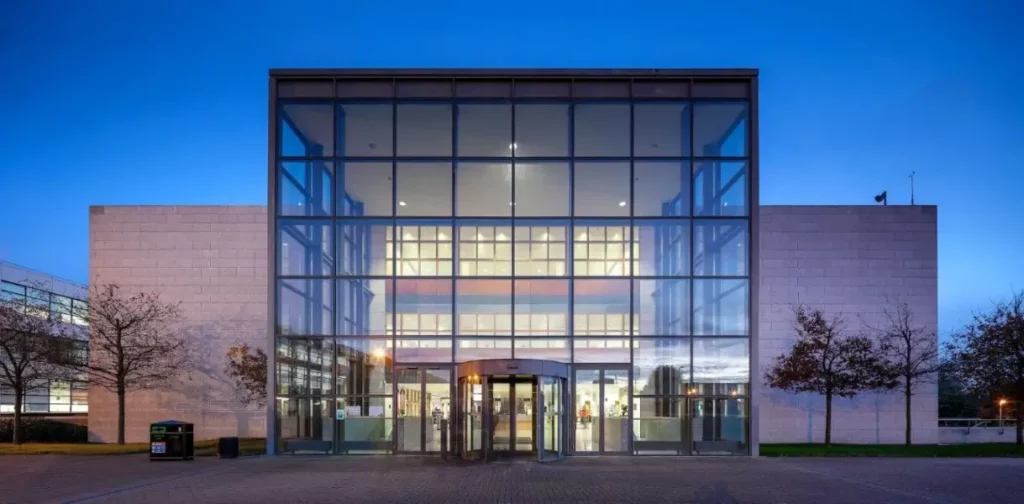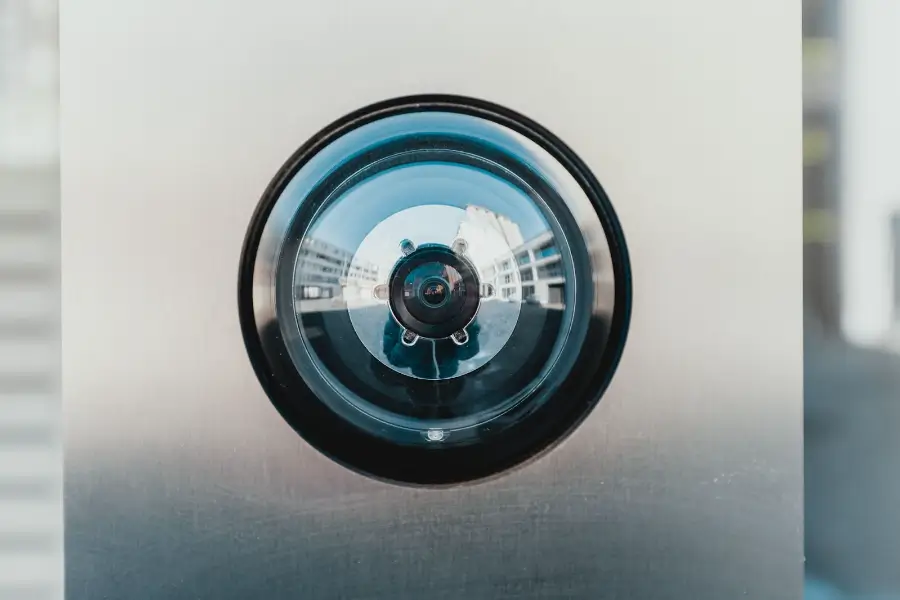Written By: Brad Campbell | December 4, 2023
Access control is an important component of any comprehensive commercial security system, whether it’s for a retail store, a school, a government facility, an office building, or anything in between.
However, access control is a broad term, and people that are just navigating the security industry for the first time often aren’t sure exactly what access control systems are, nor why they’re necessary to enhance security.
Since access control systems are such an important concept to understand and a staple in the security industry, we wanted to put together this guide to clarify everything surrounding access control systems as they pertain to commercial security.
In its broadest sense, “access control” is a term that refers to the ability to limit access to an area, either physical or cyber. Considering we are in the physical security industry, we will only focus on physical access control in this article.
Physical access control is the implementation of security measures that prevent unauthorized access or entry to certain areas.
For example, an access control point may be installed at a building’s primary entrance to control who can come in and out of the building. Additional access control systems may be implemented throughout the interior of the building, further restricting who can enter specific areas.
If we’re talking strictly by definition, traditional locked and keyed doors constitute an access control system. However, in the security industry, access control more commonly refers to more technologically advanced systems, such as key-carded or password-protected doors.
Other examples of physical access control include security gates and turnstiles, biometric-controlled doors, and even physically present security personnel that grant access to a building or area.

There are numerous day-to-day uses for access control systems that you may have come across without even recognizing them as such.
For example, turnstiles at concerts manned by staff who require tickets in order to allow a person through are a form of access control, as the staff is there to prevent any misuse.
Locked employee entrances to high-security offices that require employees to utilize key cards or fingerprint scanners to gain access is another example of an access control system that you might already use in your day-to-day life.
In short, access control is a crucial component of any comprehensive commercial security plan and, in most cases, it’s one of the first lines of defense against unauthorized entry.
On top of that, access control systems also reduce the flow of people coming into an area, which has the secondary function of preventing crowds from forming.
Commercial buildings should use access control to mitigate everyday security threats, such as forced entry, burglary, and more serious threats like active threat incidents.
In many cases, the presence of an access control system alone is enough to dissuade illegal activity, and it certainly makes building occupants feel safer.
Here some examples of different types of facilities that can benefit the most from using access control systems:
Based on the size and type of property, the building may have a single access control point or many of them. It may also use different types of access control methods (key card access, code access, security checkpoints, etc.) to control access to different areas, depending on security needs and clearances.
Let’s take a bank as an example — usually, a bank will have a security guard at the entrance and, in some cases, it may also have an electronically controlled door lock that only the bank clerk or security guard can unlock.
On top of that, the bank likely uses coded, key-carded, or fingerprint-controlled locks on doors leading to highly-sensitive areas, such as the bank vault and safe deposit boxes.
The bottom line is that the more access control systems a building uses, the more secure it will be, but access control isn’t everything…
“Fenestration security” is security relating to a building’s windows, doors, and various other openings (fenestration means all the openings in a building’s facade).
A building’s most vulnerable points are its windows and doors, and even if all its doors are locked and monitored, it’s often still possible for criminals to force entry by breaking a pane of glass and opening a door from the inside (using its emergency egress mechanism) stepping right in through a broken window.

Because of this, access control and fenestration security go hand in hand — access control restricts who can enter and exit a facility or building, and fenestration security measures prevent would-be intruders from forcing entry through a glass door or window.
In other words, a complete and effective fenestration security plan will always feature access control methods, and vice versa.
It’s virtually impossible to have effective access control systems without implementing other physical barriers that prevent forced entry.
More specifically, we’re referring to fitting doors and windows with security glazing that stops potential intruders from breaking through them to gain access.
The best way to ensure access control systems do their job is to reinforce vulnerable windows and doors (typically all easily accessible exterior glazing) with forced entry-resistant security glazing, such as Riot Glass®.
Riot Glass commercial security glazing is very versatile and can often be retrofitted onto an existing framing system, typically without removing or replacing the existing glass.
The type of existing glass doesn’t really matter because this security glazing’s strength isn’t impacted by the underlying material. It simply creates a virtually unbreakable barrier over the existing glass, protecting it from forced entry attempts and all other types of impacts.
The security glazing itself is totally see-through and feels just like regular glass, so it doesn’t compromise visibility, natural light, or curb appeal.

However, if a would-be intruder attempts to smash through the security glazing using a sledgehammer, a crowbar, a brick, or another common burglary tool, their attempts will bounce right off.
This delays and deters forced entry, causing criminals to move on and look for easier targets. In the unfortunate event of an active threat scenario, it gives building occupants time to react to an attack by running, hiding, barricading themselves inside, and waiting for the authorities to arrive and neutralize the threat.
Combining access control systems with security glazing creates an incredibly strong physical security system that can withstand a full range of threats, including:
It’s still important to combine these measures with other commercial security system components, such as video surveillance and alarm systems, but the security provided by access control and security glazing does one thing that cameras and alarms don’t: physically keeps the bad guys out.

Before you begin making any changes or upgrades to your commercial property’s security design, it’s important to conduct a threat assessment, which will help you understand which areas are most vulnerable and require extra security measures.
Threat assessments are carried out by security experts who do a full walkthrough analysis of your property to determine potential vulnerabilities and provide useful recommendations on how to fix them.
In the context of what we’ve discussed above, a threat assessment is used to figure out where access control points are needed and where security glazing should be retrofitted.
If you’re considering different access control systems for your property, there are a couple of factors to consider before making your decision.
For starters, consider what type of credentials you want people to use to access and enter your controlled security points.
For instance, do you want your doors to be unlocked using a key card or a password? These types of systems work in a very similar way, but a key card can potentially be lost or stolen, while a password can’t.
Alternatively, you can use mobile access control credentials. These allow people to use their smartphones to get past the access control point. As with most security systems integrated with smartphones, this type also has multi-factor authentication built in, preventing misuse.

While it’s possible for a smartphone to get lost, it’s much less likely for an employee to misplace their own phone than it is for them to misplace a key card.
Another (more expensive) access control option is using entry points manned by security personnel. While this will undoubtedly cost significantly more than unmanned access points, the presence of security guards is one of the biggest deterrents to unauthorized entry attempts.
Ultimately, the type of system you choose for controlling access to your facility comes down to your personal preferences and budget.
You’ll also need to be mindful of the management and maintenance that any access control system will require, so be sure to consider these factors when planning your budget.
Retrofitting a commercial property with security glazing is actually much more straightforward than choosing your access control system(s).
It typically comes down to installing forced entry-resistant glazing over all the exterior glass surfaces that a would-be intruder could reach and potentially attempt to break through.
For a high-end retailer, for example, this would mean retrofitting all storefront display windows and glass entryway doors with the glazing.

For most commercial applications, other than those for very high-security facilities, something like containment-grade (non-ballistic) ArmorPlast® AP25 is more than enough to mitigate common threats like burglary, smash-and-grab theft, and rioting and looting.
In fact, containment-grade ArmorPlast can get riddled with bullets without shattering or giving way, so it can still protect against active threats by providing access denial, keeping attackers out and away from people inside.
As for those particularly high-security facilities, you can always install ballistic-grade (bullet-resistant) Riot Glass wherever a higher level of protection is desired.
Ballistic-grade Riot Glass is still fully forced entry resistant, but has the added benefit of being able to resist ballistic attacks and stop several bullets from specific types of firearms (according to the glazing’s UL 752 rating).
Of course, as with choosing what type of access control to implement, your budget plays a big role when determining what security glazing to implement. You may find that using a combination of different types of glazing for different areas makes the most sense in terms of striking a balance between security and expense.

Fenestration security and access control are two of the most important pillars of commercial building security — you can’t have one without the other.
While access control systems help restrict the flow of people in and out of a building through authorized entrances, it’s essential to also implement physical barriers to forced entry, which is done most effectively using Riot Glass or ArmorPlast security glazing.
At Riot Glass, LLC, we are committed to providing the absolute best of the best in fenestration security solutions. We offer soup to nuts service, from manufacturing, to threat assessment, to installation.
Contact us today to discuss complementing your property’s access control points with our retrofit security glazing solutions.

HOW CAN WE HELP YOU?
